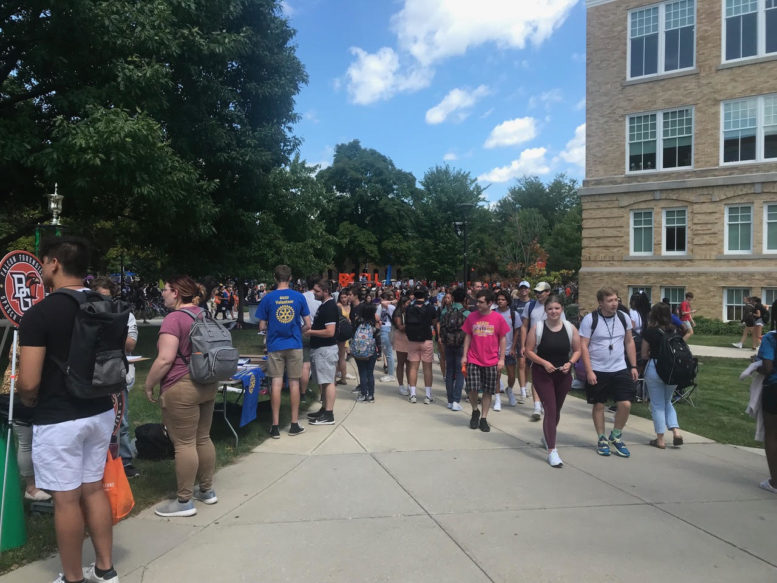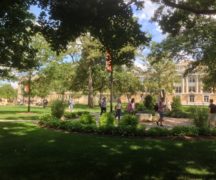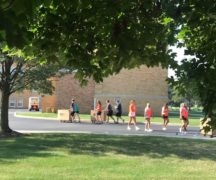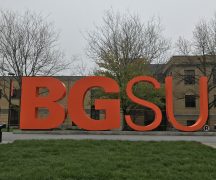By DAVID DUPONT
BG Independent News
BGSU President Rodney Rogers had good and bad news for the opening fall semester session of the BGSU Faculty Senate.
In his report, the president offered preliminary enrollment numbers – the statistics will not be final until the report due after 15 days of classes is submitted to the state.
Rogers said that the number of students directly admitted to the university was up 9 percent, and when those students coming in through the Fireland Pathway Program are added, the number of new students is 10 percent higher.
The Pathway Program helps students not deemed ready for admission to improve their academic skills before being formally admitted to BGSU. That program has grown by 21 percent, he said.
As in recent years, the students directly enrolled have higher high school GPAs, Rogers noted.
He said the increase in the new students comes in part by getting more students to apply to BGSU and a slight increase in the number of students who are admitted deciding to attend BGSU.
That “yield rate” is about 22 percent, an improvement from the past couple years, though not as high as in the past.
The university also saw a 20-percent increase in the number of students of color, including a 24 percent increase in African-American students and a 24-percent increase in Hispanic students.
However, the good news about the increase in new students was tempered by a decrease in the percentage of last year’s new students who decided to stay.
The university had been making progress toward its goal of retaining 80 percent of new students from their first year to their second, but the rate dropped to 77 percent.
“I’m concerned that students just didn’t connect, just didn’t get engaged,” he said. “They just didn’t see the relevance of why they should continue at BGSU.”
Some people, Rogers said, will attribute this to students not being academically prepared. But, he said, if students who had earned a 3.0 GPA in their first year at BGSU had stayed that would have boosted the retention rate to 83 percent, and if the university had retained those with a 2.5 GPA, the retention rate would have been 87 percent. So academics aren’t the biggest issue.
There were also ethnic and racial disparities, with retention lower among students of color. “The difference by race and ethnicity, that gap, is unacceptable,” Rogers said.
“We need to dig deep into making sure that each of our students understands what they need to do to be successful here, and what we need to do so they are successful here. That is one of the big challenges we have to address.
The university, Rogers said, is facing increased competition for students as fewer are graduating from high school in Ohio. That demographic cliff, he noted, is steeper even in Michigan, the largest source of out of state students.
Ohio has many strong universities, Rogers said. “Our challenge is to make sure we can articulate why a student should choose BGSU” over its peer institutions in the state.
The question is, said Provost Joe Whitehead: “What can we do to make sure that return on investment is good for them?”
One of the keys to making that pitch is the Life Design Initiative.
Whitehead said that Life Design will help differentiate BGSU from other schools. It addresses what families are looking for.
“They want their young person to have a holistic experience that prepares them for their future,” he said.
The Geoffrey H. Radbill Center for College and Life Design will guide students as they make the transition to the university. The Michael and Sara Kuhlin Hub for Career Design and Connections will then help them make the transition from the university to work or further education.
Whitehead also talked about changes in academic advising, which is separate from Life Design. Every college seems to have a different approach to advising.
Some faculty have expressed concern that they will play a lesser role in the process.
Whitehead said that in “streamlining” the curriculum, students will have fewer choices in courses to take. That means the faculty advisor won’t need to spend time helping a student select courses, and instead can spend that time being a mentor and helping students for life after graduation.





